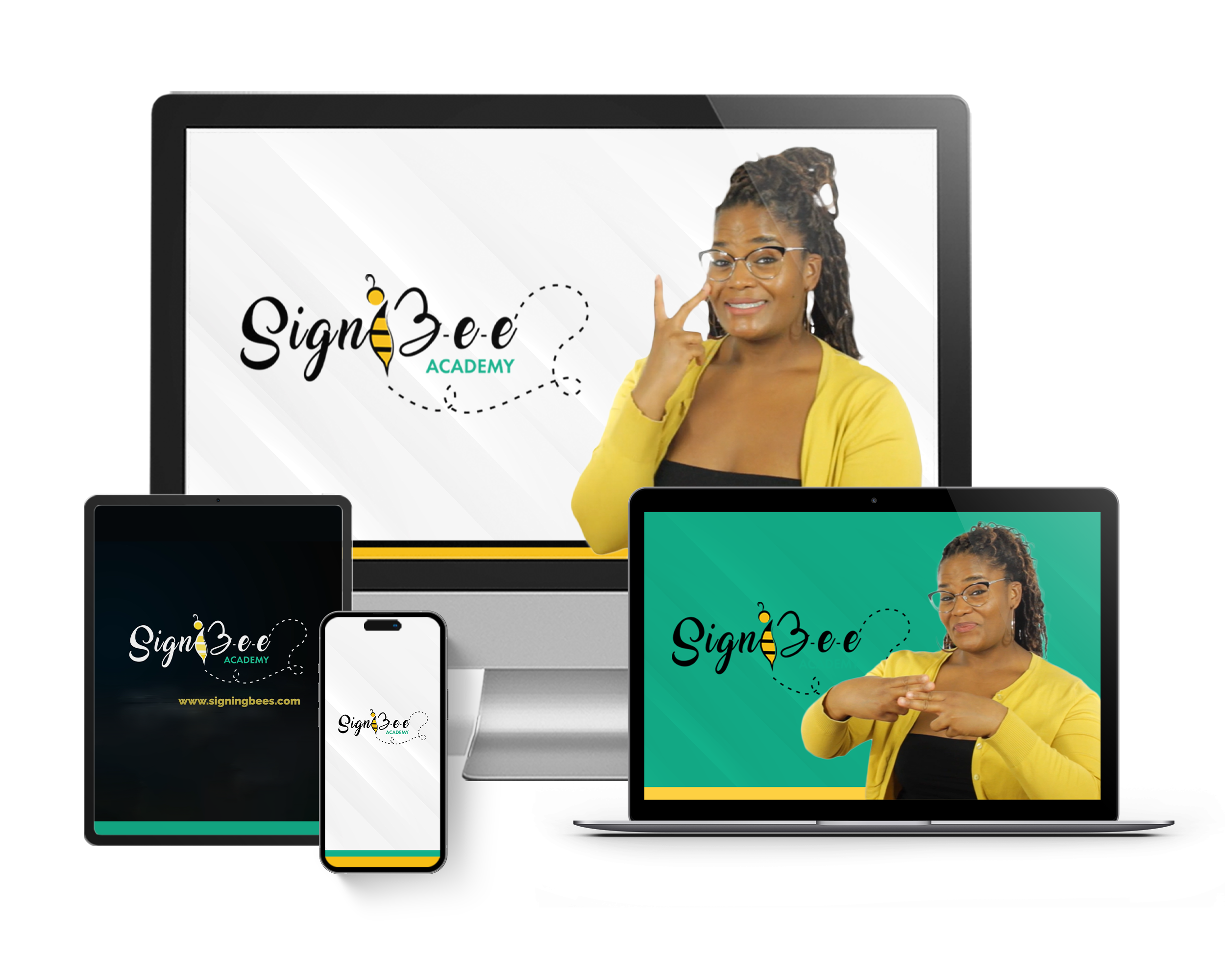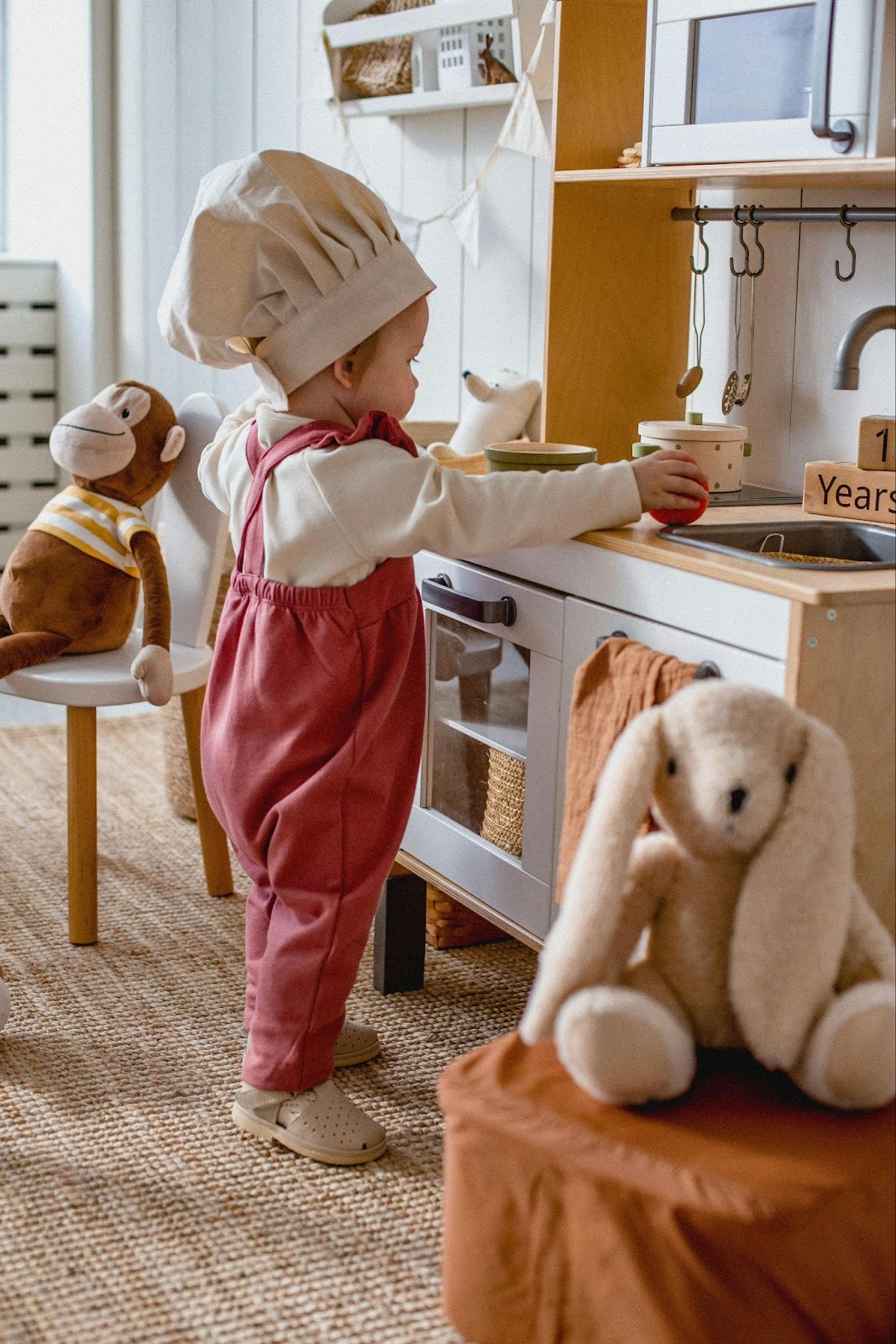Generally, babies start kicking in the womb and use that to communicate–telling their mothers that they are healthy. Their cries after leaving the womb are additional indications that they need to be seen, heard, and touched–another form of communication, precisely their first language in the world. Thereafter, they strive to develop body language to convey their feelings as they start to understand the world around them. These body language cues are a good indication that your toddler already knows the human language and is prepared to foster communication with those around him.
It doesn’t stop there though, you’ll be surprised to learn that toddlers are also capable of understanding sign language. So, let’s explore some of the ways you can get your toddler started on learning ASL.
You Should Know That Your Toddler is Capable of Learning ASL
If there is a remote chance that you have any doubts about your toddler’s ability to learn ASL, here are some reasons why your toddler can learn ASL:
- Toddlers are capable of interpreting the language that the adults around them use.
- Your toddler has already begun to develop a sense of expectation for themselves and for those around them.
- Toddlers have begun to develop streaks of independence.
- Toddler can recognize mistakes made by them and those around them
- Toddlers are capable of understanding the routine electronic exchanges that the adults in their vicinity have, like video calls and chats.
All these go to show that you should really not worry about whether your toddler’s mind can understand ASL. Let’s go forward then and talk about how to introduce sign language to them.
How to Introduce ASL to Your Toddler
Image by Freepik
Step 1: Be Conversant with ASL yourself
The most helpful step to begin ASL with your toddler is making sure that ASL isn’t strange to you. Be fluent in the language first, and then you will be better equipped to teach your toddler ASL. If you don’t know the language well enough, it’s not too late either, you can visit our website.
Step 2:Start With Their Own Language
Once you’ve sorted out your grasp of ASL, then it’s time to begin sign language with your toddler from their own language. Yes! Use the babbles, especially when your toddler just clocks one.
Being very expressive of how they feel at this age, and ASL being an expressive language, works to your advantage. So, while your toddler is still babbling, you keep signing different things at different times. At this point, you are mainly focusing on them getting acquainted with the language.
Step 3: Go Further but Stay Simple
As you watch your toddler struggle to repeat the words they hear, you can begin using particular ASL signs for longer periods of time. For instance, you can sign the words “food” and “eat” before you start feeding when it’s time for a meal. Whenever your child is being fed, if they don’t have any hearing impairment, you should speak the words out loud while making the ASL signs. Continue doing this for a few days or weeks to see if the child can sign the words.
It’s best you choose a limited number of words at a time to prevent overwhelming your toddler and be sure to use the words and ASL signs anytime they notice those specific behaviors occurring, whether to them or to those around them.
Step 4: Utilize Play Times
The act of playing is commonplace in a toddler’s existence. One of the recommendations for toddlers’ physical activity is that, aside from resting, they shouldn’t be left idle for more than an hour every day. Toddlers have several ways to keep themselves amused through play. However, you must make sure they are not frequently left unattended.
Join them in the play as much as you can, and use signs during the different activities of their play. You can be more purposeful during those playtimes by using a variety of ASL games created specifically for kids like ASL feelings and emotions cards and ASL fun-way picture books.
Step 5: Utilize the Stories
Use tales and story times to introduce ASL to your toddler, who readily accepts the stories you tell them (actual or made up). For instance, you could take note of a story that your toddler enjoys reading or listening to as the case may be, and sign some of the words and phrases as you read it to them. Additionally, look for ASL children’s books that might enhance your toddler’s understanding of the language.
Step 6: Utilize Simple Songs and Rhymes
Songs and rhymes are an important part of a toddler’s learning, so using ASL signs while your child sings and recites rhymes is a good way to introduce sign language to them since they already have the ability to make various body gestures at this age.
You Can Start With these Basic ASL Signs
- To indicate drinking: Use your thumb to touch your mouth
- To say thank you: Extend your forearm forward, take the other palm to your lip, then place it on the extended palm
- To Sleep/Show Bedtime: Press your palms together, take it to the side of your face, and then tilt your head sideways
- To show fear: Pat your chest repeatedly with a facial notation of fear
- To indicate something is smelly: Touch your finger to your already wrinkled nose
- For eating: Pinch the fingers of one hand together and take it to your mouth
Conclusion
Even though you might not realize the benefits of having your toddler learn ASL for quite some time, it is still a highly beneficial decision because if you continue teaching them until they are older, your child will become quite fluent in the language. Make use of the time and social flexibility your toddler possesses and guide them to learning ASL.
Sign language can be learned and used by anybody, not only by the deaf and hard of hearing because in many countries today, ASL is essential for establishing relationships and for better understanding the Deaf communities around.
You can find some ASL learning resources at SignBee Academy.
Image by bearfoto on Freepik
Generally, babies start kicking in the womb and use that to communicate–telling their mothers that they are healthy. Their cries after leaving the womb are additional indications that they need to be seen, heard, and touched–another form of communication, precisely their first language in the world. Thereafter, they strive to develop body language to convey their feelings as they start to understand the world around them. These body language cues are a good indication that your toddler already knows the human language and is prepared to foster communication with those around him.
It doesn’t stop there though, you’ll be surprised to learn that toddlers are also capable of understanding sign language. So, let’s explore some of the ways you can get your toddler started on learning ASL.
You Should Know That Your Toddler is Capable of Learning ASL
If there is a remote chance that you have any doubts about your toddler’s ability to learn ASL, here are some reasons why your toddler can learn ASL:
- Toddlers are capable of interpreting the language that the adults around them use.
- Your toddler has already begun to develop a sense of expectation for themselves and for those around them.
- Toddlers have begun to develop streaks of independence.
- Toddler can recognize mistakes made by them and those around them
- Toddlers are capable of understanding the routine electronic exchanges that the adults in their vicinity have, like video calls and chats.
All these go to show that you should really not worry about whether your toddler’s mind can understand ASL. Let’s go forward then and talk about how to introduce sign language to them.
How to Introduce ASL to Your Toddler
Image by Freepik
Step 1: Be Conversant with ASL yourself
The most helpful step to begin ASL with your toddler is making sure that ASL isn’t strange to you. Be fluent in the language first, and then you will be better equipped to teach your toddler ASL. If you don’t know the language well enough, it’s not too late either, you can visit our website.
Step 2:Start With Their Own Language
Once you’ve sorted out your grasp of ASL, then it’s time to begin sign language with your toddler from their own language. Yes! Use the babbles, especially when your toddler just clocks one.
Being very expressive of how they feel at this age, and ASL being an expressive language, works to your advantage. So, while your toddler is still babbling, you keep signing different things at different times. At this point, you are mainly focusing on them getting acquainted with the language.
Step 3: Go Further but Stay Simple
As you watch your toddler struggle to repeat the words they hear, you can begin using particular ASL signs for longer periods of time. For instance, you can sign the words “food” and “eat” before you start feeding when it’s time for a meal. Whenever your child is being fed, if they don’t have any hearing impairment, you should speak the words out loud while making the ASL signs. Continue doing this for a few days or weeks to see if the child can sign the words.
It’s best you choose a limited number of words at a time to prevent overwhelming your toddler and be sure to use the words and ASL signs anytime they notice those specific behaviors occurring, whether to them or to those around them.
Step 4: Utilize Play Times
The act of playing is commonplace in a toddler’s existence. One of the recommendations for toddlers’ physical activity is that, aside from resting, they shouldn’t be left idle for more than an hour every day. Toddlers have several ways to keep themselves amused through play. However, you must make sure they are not frequently left unattended.
Join them in the play as much as you can, and use signs during the different activities of their play. You can be more purposeful during those playtimes by using a variety of ASL games created specifically for kids like ASL feelings and emotions cards and ASL fun-way picture books.
Step 5: Utilize the Stories
Use tales and story times to introduce ASL to your toddler, who readily accepts the stories you tell them (actual or made up). For instance, you could take note of a story that your toddler enjoys reading or listening to as the case may be, and sign some of the words and phrases as you read it to them. Additionally, look for ASL children’s books that might enhance your toddler’s understanding of the language.
Step 6: Utilize Simple Songs and Rhymes
Songs and rhymes are an important part of a toddler’s learning, so using ASL signs while your child sings and recites rhymes is a good way to introduce sign language to them since they already have the ability to make various body gestures at this age.
You Can Start With these Basic ASL Signs
- To indicate drinking: Use your thumb to touch your mouth
- To say thank you: Extend your forearm forward, take the other palm to your lip, then place it on the extended palm
- To Sleep/Show Bedtime: Press your palms together, take it to the side of your face, and then tilt your head sideways
- To show fear: Pat your chest repeatedly with a facial notation of fear
- To indicate something is smelly: Touch your finger to your already wrinkled nose
- For eating: Pinch the fingers of one hand together and take it to your mouth
Conclusion
Even though you might not realize the benefits of having your toddler learn ASL for quite some time, it is still a highly beneficial decision because if you continue teaching them until they are older, your child will become quite fluent in the language. Make use of the time and social flexibility your toddler possesses and guide them to learning ASL.
Sign language can be learned and used by anybody, not only by the deaf and hard of hearing because in many countries today, ASL is essential for establishing relationships and for better understanding the Deaf communities around.
You can find my ASL learning courses at SignBee Academy.
Thumbnail Photo Credit to Image by bearfoto on Freepik





